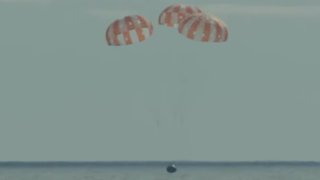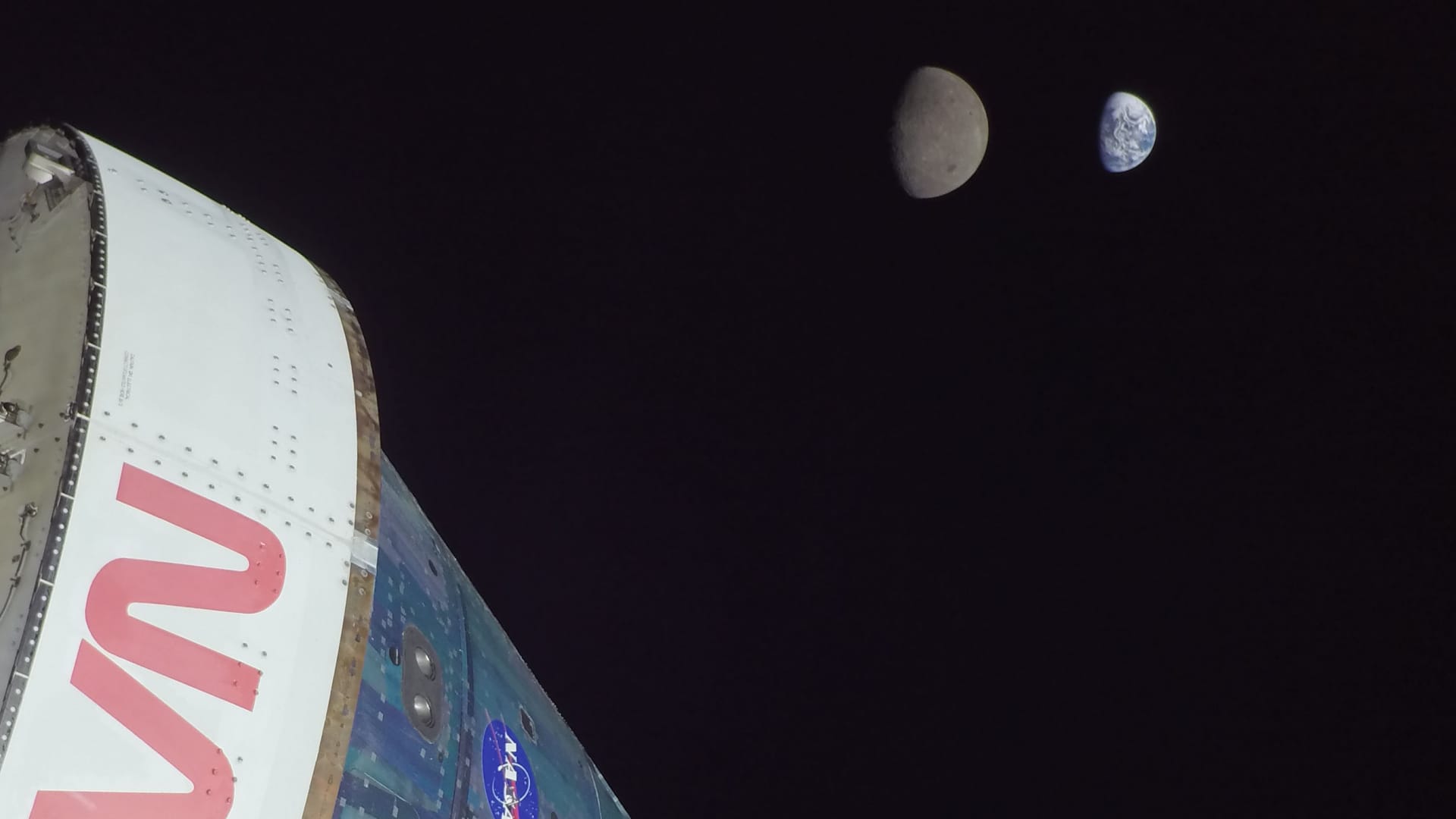
- NASA's Orion spacecraft splashed down in the Pacific Ocean off the coast of Baja Mexico on Sunday, completing the agency's Artemis 1 mission.
- Coming into Earth's atmosphere at near 25,000 miles per hour, the intense reentry process marked the final step in the agency's first lunar mission.
- "America's new ticket to ride to the moon and beyond," NASA spokesperson Rob Navias said
NASA's Orion spacecraft splashed down in the Pacific Ocean off the coast of Baja California, Mexico on Sunday, completing the agency's Artemis 1 mission.
Just under 26 days since Artemis 1 launched on NASA's Space Launch System (SLS) rocket, its most powerful ever, the capsule is back. Coming into Earth's atmosphere at a near 25,000 miles per hour, the intense reentry process marked the final step in the agency's first lunar mission.
"This is the moment of truth for Orion," NASA spokesperson Rob Navias said on the agency's live webcast, speaking from mission control in Houston, as the capsule began reentry.
"America's new ticket to ride to the moon and beyond," Navias said later.
Orion completed a pair of near passes above the moon's surface during the missions, representing an end-to-end test of the system that NASA hopes will return astronauts to the surface of the moon in the next few years.
Get Tri-state area news delivered to your inbox. Sign up for NBC New York's News Headlines newsletter.
While no astronauts were onboard Artemis 1, the nearly month-long journey around the moon is a critical demonstration for NASA's lunar program.
Money Report
Sign up here to receive weekly editions of CNBC's Investing in Space newsletter.
The mission represents a crucial inflection point in NASA's moon plans, with the program delayed for years and running billions of dollars over budget. The Artemis program represents a series of missions with escalating goals. The third – tentatively scheduled for 2025 – is expected to return astronauts to the lunar surface for the first time since the Apollo era.







